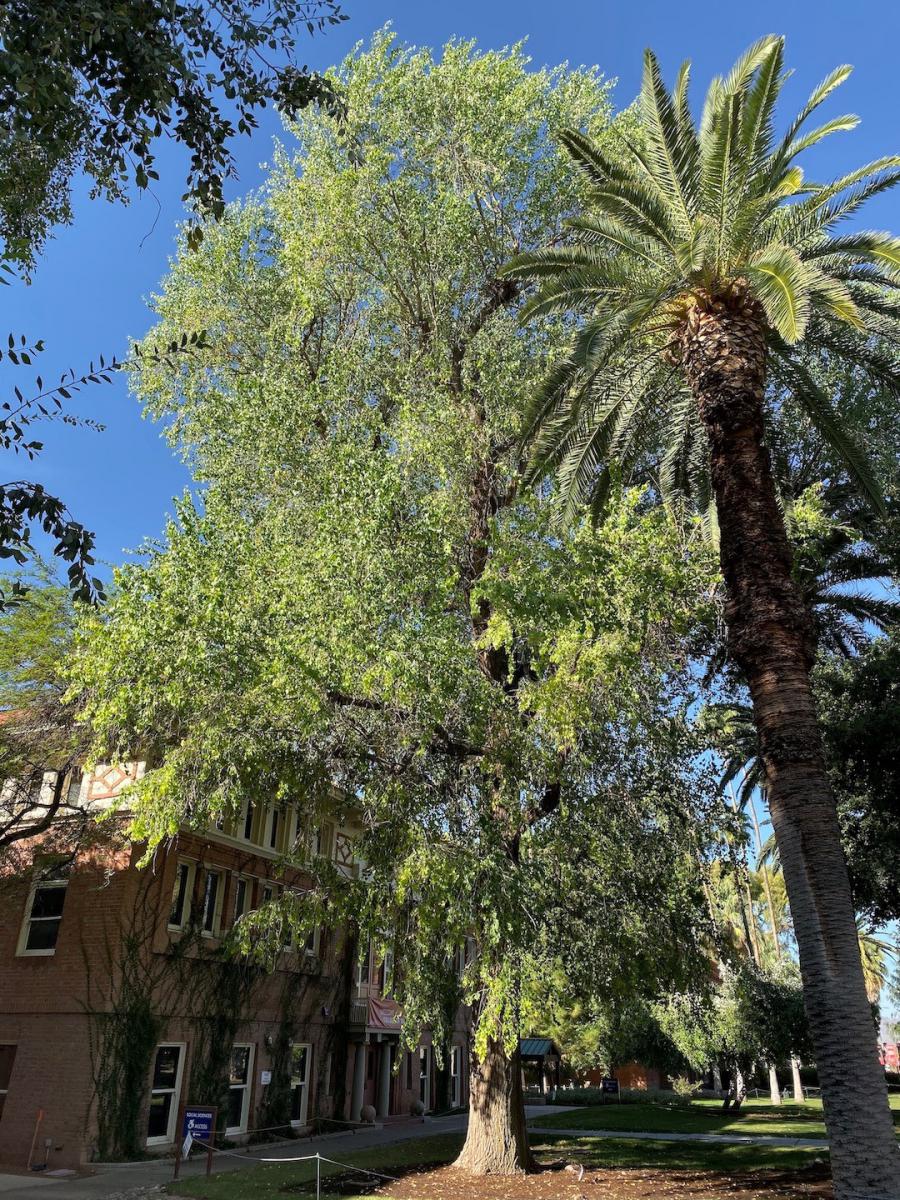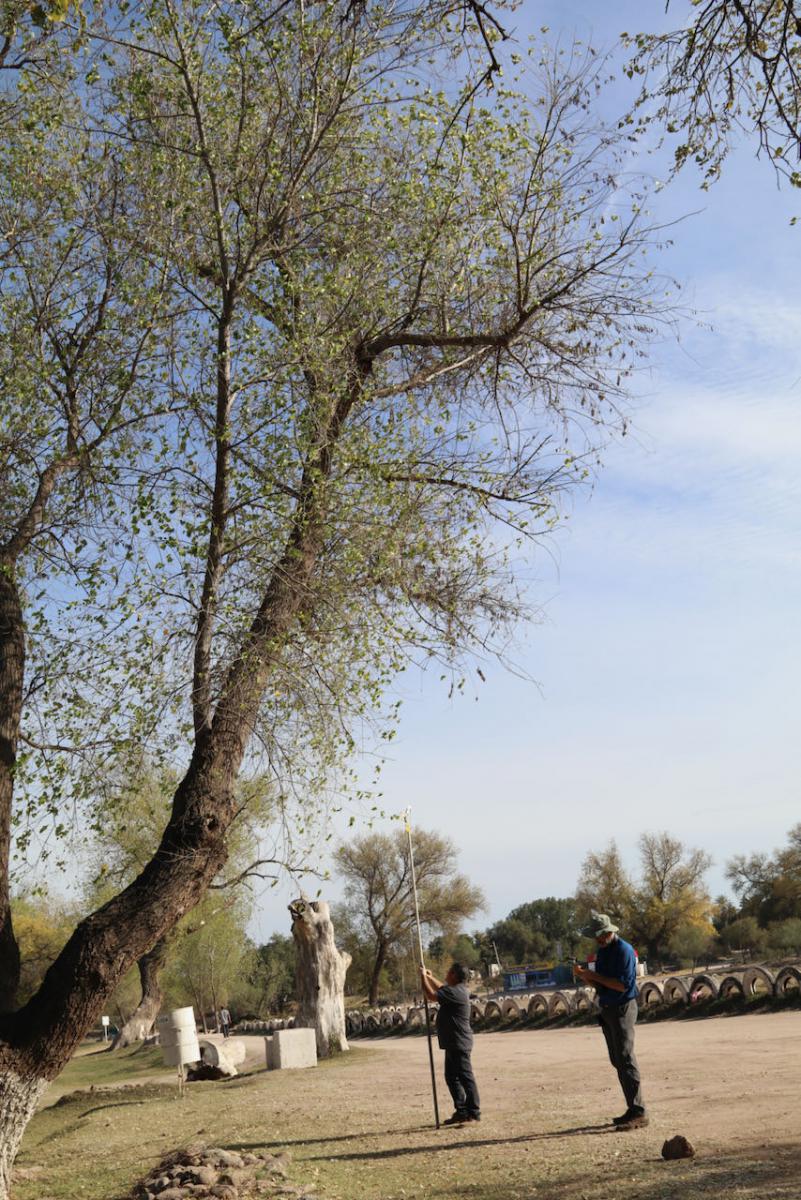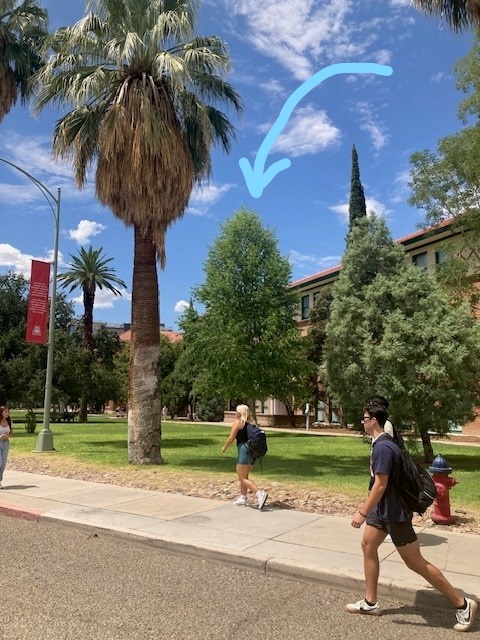In October 2018, Prof. Matt Olson working along with a team of other researchers from the Department of Biological Sciences at Texas Tech University in Lubbock Texas contacted the Campus Arboretum to request live samples of the mature female Populus mexicana accession we have growing in our collection. The researchers were interested in mapping the sex chromosomes in this species and assembling its genome sequence for a NSF funded project (award # 1542599).
the Department of Biological Sciences at Texas Tech University in Lubbock Texas contacted the Campus Arboretum to request live samples of the mature female Populus mexicana accession we have growing in our collection. The researchers were interested in mapping the sex chromosomes in this species and assembling its genome sequence for a NSF funded project (award # 1542599).
The group required regular tissue collection from a greenhouse grown specimen in order to assemble the genome. For this reason, they needed to have a tree growing in their greenhouse to supply the needed material. However, not just any plant would do as they needed to confirm the sex of the plant, which is dioecious, and seed grown plants take decades to reach sexual maturity. Further, while the plant grows abundantly in Mexico, importing cuttings to the US is quite challenging. To solve these problems, they requested cuttings from our mature popular, which is a female and roots readily, so they could ensure a supply of containerized plants needed for the project.
According to Richard Felger, this Populus mexicana subsp. dimorpha tree, west of Douglass Hall was grown from a cutting collected by UA Prof. Warren Jones (probably near Mexco Hwy 15 crossing of the Rio Yaqui, N. of Cd. Obregon, around 1970.
Unlike the routine plant sample collections we have done in the past, collecting from such an enormous tree was quite involved. Thanks to the help of the UA Grounds Services staff, a bucket truck carried a grounds person to various levels of the canopy to collect 8, 30-40 cm long stems from juvenile, intermediate, and physiologically mature samples at the bottom, middle and top of the canopy, respectively. (We did this because the physiological age of the material sometimes influences rooting success).
Shout out to members of the UA Grounds Arborist team: Gabe, Carlos, Jeanne, John, Manny and Humberto.
Their professionalism and efficiency in supporting the requests from the arboretum are really appreciated.
 In June 2021, Prof. Olson sent an update to notify us that they had sequenced and assembled the entire genome of the female genotype we sent, along with a putative male genotype that was grown from seed collected in Sonora, Mexico (Left: photo). This male has not yet flowered, and its sex was predicted by also sequencing its genome. The male individual was no longer needed, was growing too large to be maintained in their Lubbock, Texas greenhouse, and could not be planted in Lubbock because it would likely die during their harshly cold winters. Additionally, the previous year, due to COVID 19, the plant had suffered as a result of personnel restrictions on the lab that limited greenhouse plant care. So, the situation emerging was that while the scientific value of the tree was great, and the horticultural need was even greater, the tree offered to the Campus Arboretum seemed too challenging to retrieve.
In June 2021, Prof. Olson sent an update to notify us that they had sequenced and assembled the entire genome of the female genotype we sent, along with a putative male genotype that was grown from seed collected in Sonora, Mexico (Left: photo). This male has not yet flowered, and its sex was predicted by also sequencing its genome. The male individual was no longer needed, was growing too large to be maintained in their Lubbock, Texas greenhouse, and could not be planted in Lubbock because it would likely die during their harshly cold winters. Additionally, the previous year, due to COVID 19, the plant had suffered as a result of personnel restrictions on the lab that limited greenhouse plant care. So, the situation emerging was that while the scientific value of the tree was great, and the horticultural need was even greater, the tree offered to the Campus Arboretum seemed too challenging to retrieve.
Recalling Civano Wholesale Growers in Tucson, AZ had helped us previously with shipping donated plants from another location in TX, I inquired with Jackie Lyle VP of Logistics at Civano to see if it was possible to pick up the plant in TX and deliver it to us in AZ. In her characteristic way, she replied immediately, and with enthusiasm.

"Your Populus tree is here, safe, and on the loading dock.
We nicknamed it Penny, and the driver took extra special care
in transport. Penny slept in the cab each night with the driver,
who sang kumbaya to it each night before bed. It's been quite
entertaining to hear the story of Penny's voyage to Tucson."
Jackie Lyle, Civano Growers
With the help of Mark Novak, University Landscape Architect with Planning Design and Construction, a location adjacent to the existing female specimen was identified. Drew Barna, UA Grounds Plant Health Care Specialist with direction from Sandra Obenour-Dowd, Grounds Superintendent, received the tree, orchestrated its installation, and began measures to nurse the plant back to health in the shade of the mature female P. mexicana tree at Douglass.
UPDATE:
August 2023, even after one of the hottest summers on record, the now "3 year old transplant" was photographed. We are astonished at how quickly it has established and grown! The Grounds Services staff member who arranged for the tree to be planted in April 2021, reported that the tree trunk had a 3/8" caliper and was 36" at planting while now it is over 20 feet tall. He stated "I don’t think I have ever seen any tree grow like that and even in this year's extreme heat it looks completely unaffected...like brand new! How remarkable." Drew Barna, CIC, CLIA Landscape Manager - PHC, Irrigation, Arbor Care
Little "Penny" the poplar is proving to be a model of resilience!


